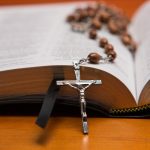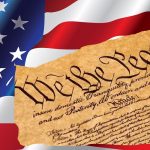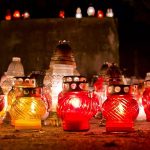
Yom HaShoah
Yom HaShoah, also known as Holocaust Memorial Day, is a remembrance day to commemorate the six million Jewish people who died during the Holocaust. It is usually observed on the 27th day of the Hebrew month Nisan, which falls around April or May in the Gregorian calendar. However, if the 27th day is adjacent to the Jewish Sabbath, then it may be moved by a day.
History of Yom HaShoah
The National Socialist German Workers’ Party, led by Adolf Hitler, subscribed to the notion of racial hygiene and believed it was possible to create a race of pure German people using many of the same techniques that were applied to agriculture. They believed that to do this, they had to remove those groups whom they saw as racially impure.
These groups included Jewish people, disabled people, homosexuals, Communists, Jehovah’s Witnesses, and certain groups of people from both Russia and Poland. Their invidious plan, known as the “Final Solution to the Jewish Question,” led to the death of over 11 million people, of which about 6 million were Jewish, in German concentration camps from 1933 to 1945.
In 1953, the Prime Minister of Israel, David Ben-Gurion, and the President of Israel, Yitzhak Ben-Zvi, signed into law Yom HaShoah as an observance day. The original plan was to hold this observance day on the 14th of Nisan, which was the anniversary of the Warsaw ghetto uprising. However, this could not be done because that day preceded Passover. It was then decided to move the date to the 27th of Nisan.
Yom HaShoah Customs & Traditions
In Israel, Yom HaShoah begins at sundown, and a state ceremony is formally held at the Holocaust Martyrs’ and Heroes’ Remembrance Authority in Jerusalem. At this ceremony, the national flag is lowered to half-mast, and both the Prime Minister and the President of Israel may give speeches commemorating the event.
Also on this day, Holocaust survivors, as well as those who want to honor the memory of these survivors, will light six torches to symbolize the six million Jews who died during the Holocaust. In the United States, Yom HaShoah commemorations can range from formal ceremonies in synagogues to community vigils. It is also customary to hold educational programs that teach the history of the Holocaust.
All over the country, Yom HaShoah programs feature history lessons, the viewing of Holocaust documentaries, and many feature a lecture given by someone who has actually survived the Holocaust. Jewish schools across the country also hold educational programs to teach their students about the horrors of the Holocaust.








